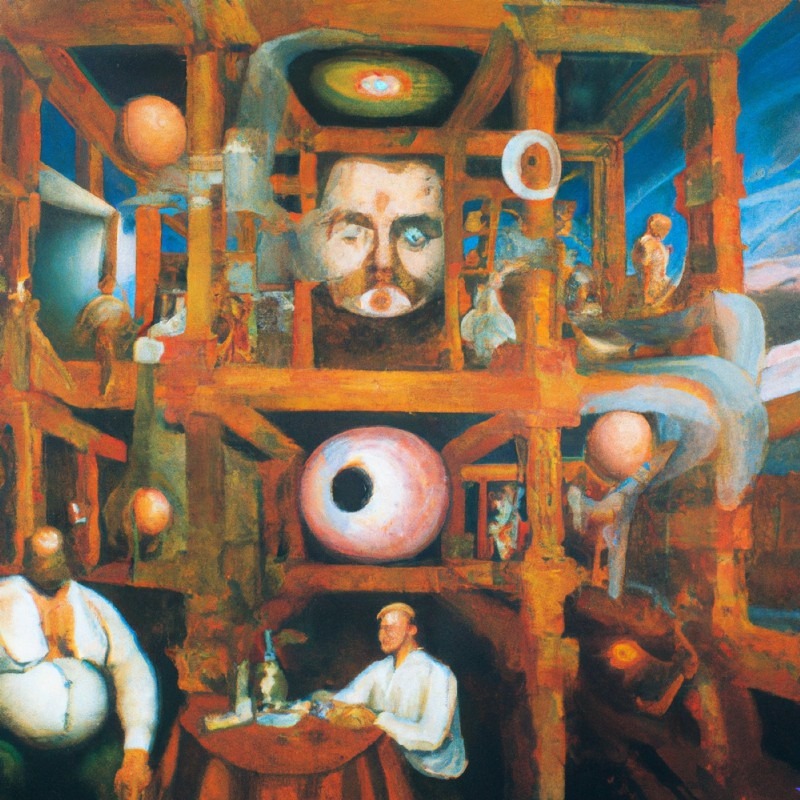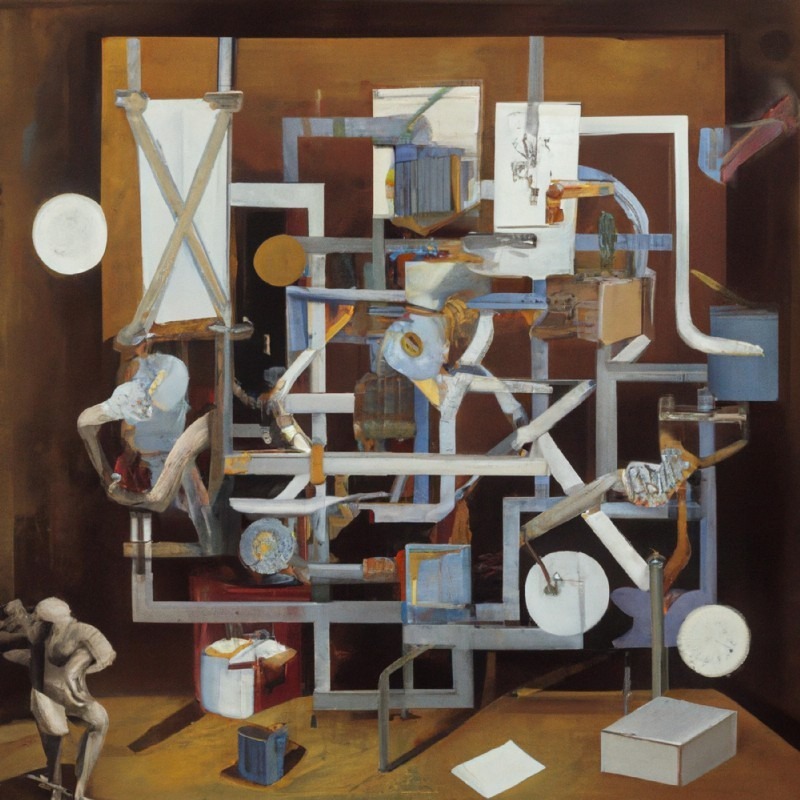“Quantum Leap: How Quantum Computing is Revolutionizing Technology and Transforming Industries” by Mark M. Whelan

Quantum computing is a type of computing that uses principles of quantum mechanics, such as superposition and entanglement, to perform operations on data. In contrast to classical computing, which uses bits that are either 0 or 1, quantum computing uses quantum bits, or qubits, which can be both 0 and 1 at the same time. This allows quantum computers to perform certain types of calculations much faster than classical computers.
One of the main benefits of quantum computing is its ability to solve certain types of problems that are intractable for classical computers. For example, quantum computers can quickly search through a large database to find a particular record, or solve complex optimization problems that have many possible solutions.
Another key feature of quantum computing is its ability to maintain the delicate quantum state of a system, which is essential for many quantum algorithms. In classical computing, the state of a system is easily lost or corrupted due to interactions with the environment, but quantum computers use error-correcting codes and other techniques to protect the quantum state of a system and ensure that it remains stable.
Here are a few examples of the potential applications of quantum computing:
- In cryptography, quantum computers could be used to break many of the encryption algorithms that are currently used to secure online communications.
- In medicine, quantum computers could be used to design new drugs or to search through vast databases of medical records to find patterns or trends that could help in the diagnosis and treatment of diseases.
- In finance, quantum computers could be used to model and analyze complex financial data, such as stock market trends or risk management.
- In logistics, quantum computers could be used to optimize supply chain management or to plan routes for delivery trucks.
Overall, quantum computing has the potential to revolutionize many different fields by enabling us to solve complex problems that are intractable for classical computers. However, the development of quantum computers is still in its early stages, and there are many challenges that must be overcome before we can fully realize the potential of this technology.
To learn more about emerging trends by Mark M. Whelan or his artwork.
Visit Future Center Ventures
“Algorithms Unveiled: The Impact of Algorithms on Our Lives and How They’re Shaping Our Future” by Mark M. Whelan

An algorithm is a set of steps or procedures that are followed in order to solve a problem. Algorithms are an essential part of computer science and are used to perform a wide variety of tasks, from simple calculations to complex data analysis.
One of the main characteristics of an algorithm is that it must be precise and unambiguous, so that it can be followed by a computer or other machine in a mechanical way. This means that each step in the algorithm must be clearly defined and there must be no room for interpretation or ambiguity.
One of the key benefits of algorithms is that they allow computers to automate complex tasks, which would be impossible or impractical for a human to do by hand. For example, an algorithm might be used to analyze a large dataset to identify trends or patterns, or to search through a database to find specific records.
Another important aspect of algorithms is that they can be used to solve problems quickly and efficiently. By carefully designing an algorithm, it is possible to optimize it for speed and accuracy, so that it can solve complex problems in a matter of seconds or minutes, even if the problem itself would take a human much longer to solve.
Here are a few examples of the significance of algorithms in different fields:
- In computer science, algorithms are used to solve a wide range of problems, including searching and sorting, data compression, and pattern recognition.
- In business, algorithms are used for tasks such as fraud detection, market analysis, and customer profiling.
- In science and engineering, algorithms are used for tasks such as modelling and simulation, data analysis, and image and signal processing.
- In healthcare, algorithms are used for tasks such as diagnostics, drug discovery, and medical image analysis.
Overall, the significance of algorithms is that they allow us to solve complex problems quickly and efficiently, and to automate tasks that would be impossible or impractical for humans to do by hand.
To learn more about emerging trends by Mark M. Whelan or his artwork.
Visit Future Center Ventures
Unlocking the Potential of Smart Contracts: Understanding the Future of Secure and Automatic Transactions by Mark M. Whelan

A smart contract is a type of computer program that is used to automatically enforce the terms of a contract or agreement. Smart contracts are often used in the context of blockchain technology, which allows them to be executed and enforced in a decentralized, trustless manner.
The main advantage of using smart contracts is that they can automate the execution of a contract, which eliminates the need for intermediaries, such as lawyers or notaries, to enforce the terms of the contract. This can reduce costs and make the process of entering into and enforcing a contract more efficient.
Another key feature of smart contracts is that they are immutable, which means that once they are deployed on a blockchain, they cannot be altered or changed. This provides a high level of security and ensures that the terms of the contract are always enforced in the same way.
Here are a few examples of the potential applications of smart contracts:
- In real estate, a smart contract could be used to automatically transfer ownership of a property from the seller to the buyer when certain conditions are met, such as the payment of the purchase price.
- In insurance, a smart contract could be used to automatically pay out a claim when certain conditions are met, such as the occurrence of an insured event.
- In supply chain management, a smart contract could be used to automatically release payment to a supplier when certain conditions are met, such as the delivery of goods to the buyer.
- In voting, a smart contract could be used to securely and transparently tally votes and ensure that each person can only vote once.
Overall, smart contracts have the potential to revolutionize the way that we enter into and enforce contracts by making the process more efficient and secure. As the use of blockchain technology continues to grow, we can expect to see more and more applications of smart contracts in a variety of different fields.
To learn more about emerging trends by Mark M. Whelan
Visit Future Center Ventures
“Blockchain Identities: The Future of Digital ID’s and How they’re Changing the Way We Verify and Secure our Online Identities” by Mark M. Whelan

Blockchain identities are digital identities that are stored on a blockchain, a decentralized, distributed ledger that is used to record transactions and other data. A blockchain identity typically consists of a public key, which is used to identify the user, and a private key, which is used to sign transactions and provide proof of ownership of the identity.
One of the main benefits of using blockchain identities is that they are decentralized, which means that they are not controlled by any single authority or entity. This allows users to have greater control over their own identities and reduces the risk of identity theft or fraud.
Another key advantage of blockchain identities is that they are immutable, which means that once they are recorded on the blockchain, they cannot be changed or altered. This provides a high level of security and ensures that the identity of a user is verifiable and trusted.
Here are a few examples of the potential applications of blockchain identities:
- In online banking, a user could use a blockchain identity to securely access their bank account and make transactions without having to provide sensitive personal information to the bank.
- In online voting, a blockchain identity could be used to verify the identity of a voter and ensure that each person can only vote once.
- In supply chain management, a blockchain identity could be used to track the origin and movement of goods and to ensure that they are not counterfeited or tampered with.
- In social media, a blockchain identity could be used to verify the identity of a user and to prevent the spread of misinformation or fake news.
Overall, blockchain identities have the potential to provide a secure and decentralized way to verify the identity of users and to ensure the integrity of online transactions. As the use of blockchain technology continues to grow, we can expect to see more and more applications of blockchain identities in a variety of different fields.
To learn more about emerging trends by Mark M. Whelan or his artwork.
Visit Future Center Ventures
“Digital DNA: The Future of Data Storage and Security” by Mark M. Whelan

The conversion of binary digital data into DNA strings is a promising area of research with potential applications in fields such as data storage and biotechnology. The ability to encode and store digital data in DNA could enable more efficient and long-term storage of large amounts of data, and may also offer new opportunities for information processing and analysis.
One of the main reasons for converting binary digital data into DNA strings is the high density and stability of DNA. DNA molecules are very small, and can store a large amount of information in a tiny space. Additionally, DNA is stable and can potentially last for long periods of time, making it a good candidate for data storage.
However, there are also some challenges and pitfalls associated with this approach. One of the main challenges is the accuracy and reliability of the conversion process. The encoding of digital data in DNA involves a number of steps, including the synthesis of DNA strands, the error-correction of the encoded data, and the reading and decoding of the DNA strands. Any errors or mistakes in these steps could result in the loss or corruption of the stored data.
Another challenge is the cost and complexity of the technology required to encode and read DNA data. Currently, the synthesis and sequencing of DNA strands is a labor-intensive and expensive process, which limits its widespread use for data storage.
In summary, the conversion of binary digital data into DNA strings has the potential to offer efficient and long-term storage of large amounts of data. However, challenges such as accuracy and cost may need to be addressed before this approach can be widely adopted.
To learn more about emerging trends by Mark M. Whelan or his artwork.
Visit Future Center Ventures
Or my new book available on Amazon and Apple.
Originally published at https://www.markmwhelan.com on December 7, 2022.
